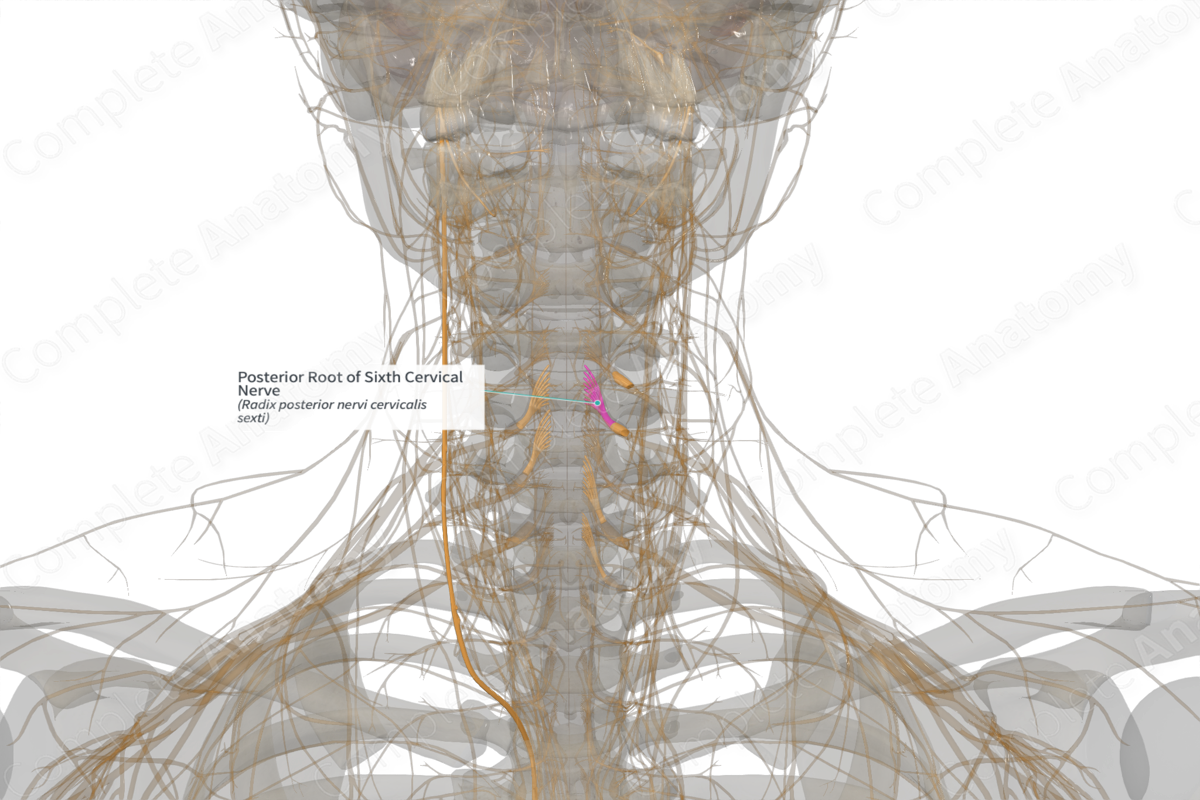
Posterior Root of Sixth Cervical Nerve (Right)
Radix posterior nervi cervicalis sexti
Read moreQuick Facts
Origin: Sixth cervical nerve.
Course: Medially towards the posterior side of the spinal cord.
Branches: None.
Supply: Sensory innervation to the skin above trapezius and to lateral part of the upper limb.
Origin
The posterior root of the sixth cervical nerve originates just lateral to or in the intervertebral foramen, between the fifth and sixth cervical vertebrae. This corresponds to the point where the cervical nerve splits into anterior and posterior roots.
Course
The posterior root of the sixth cervical nerve runs medially towards the posterior side of the spinal cord. Adjacent to the appropriate spinal cord level, the posterior root splits into smaller rootlets, which enter the posterior spinal cord in line with the dorsal horn of the gray matter.
Branches
There are no branches of the posterior root of the sixth cervical nerve. The proximal end of the posterior root has a bulge called the spinal (or dorsal root) ganglion, which is the location of the neuronal cell bodies of the neurons that form the posterior root.
Supplied Structures
Sensory afferent fibers from the skin around the lateral upper limb and shoulder are relayed to the posterior root via the anterior ramus of the sixth cervical nerve.
The sensory afferent neurons, which provide innervation to the skin above the trapezius, transmit general sensory information to the posterior root via the posterior ramus of the sixth cervical nerve.
Learn more about this topic from other Elsevier products

